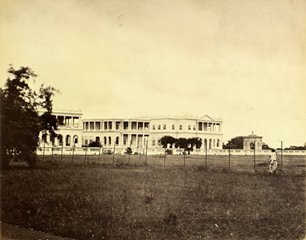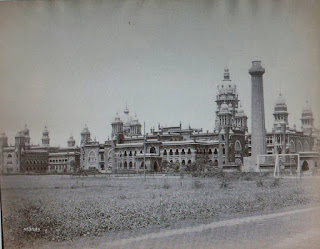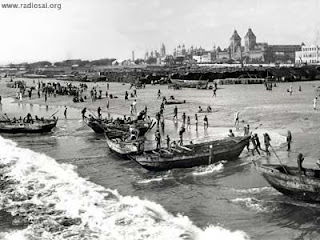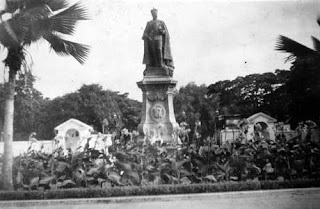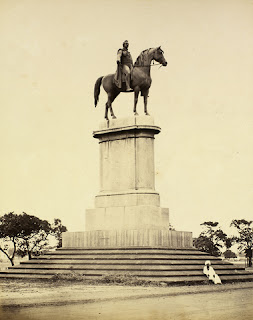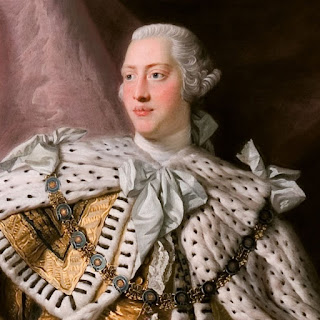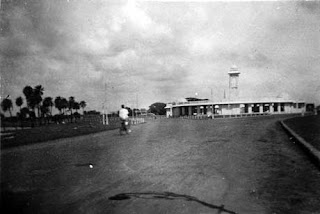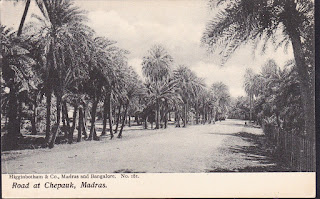Naalu Kal Mandapam
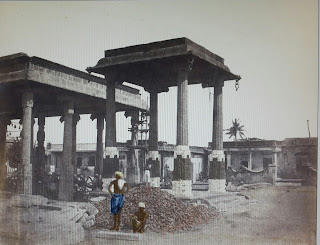
The beautiful Nallu Kal mandapam in front of the main tower of Parthasarathy temple in this photo by Frederick Fiebig in the year 1851. See the beautiful stone rings an architectural aspect of Vijayanagar era. The same mandapam recently photographed. Only the Vahana mandapam remains and the rest have changed.
